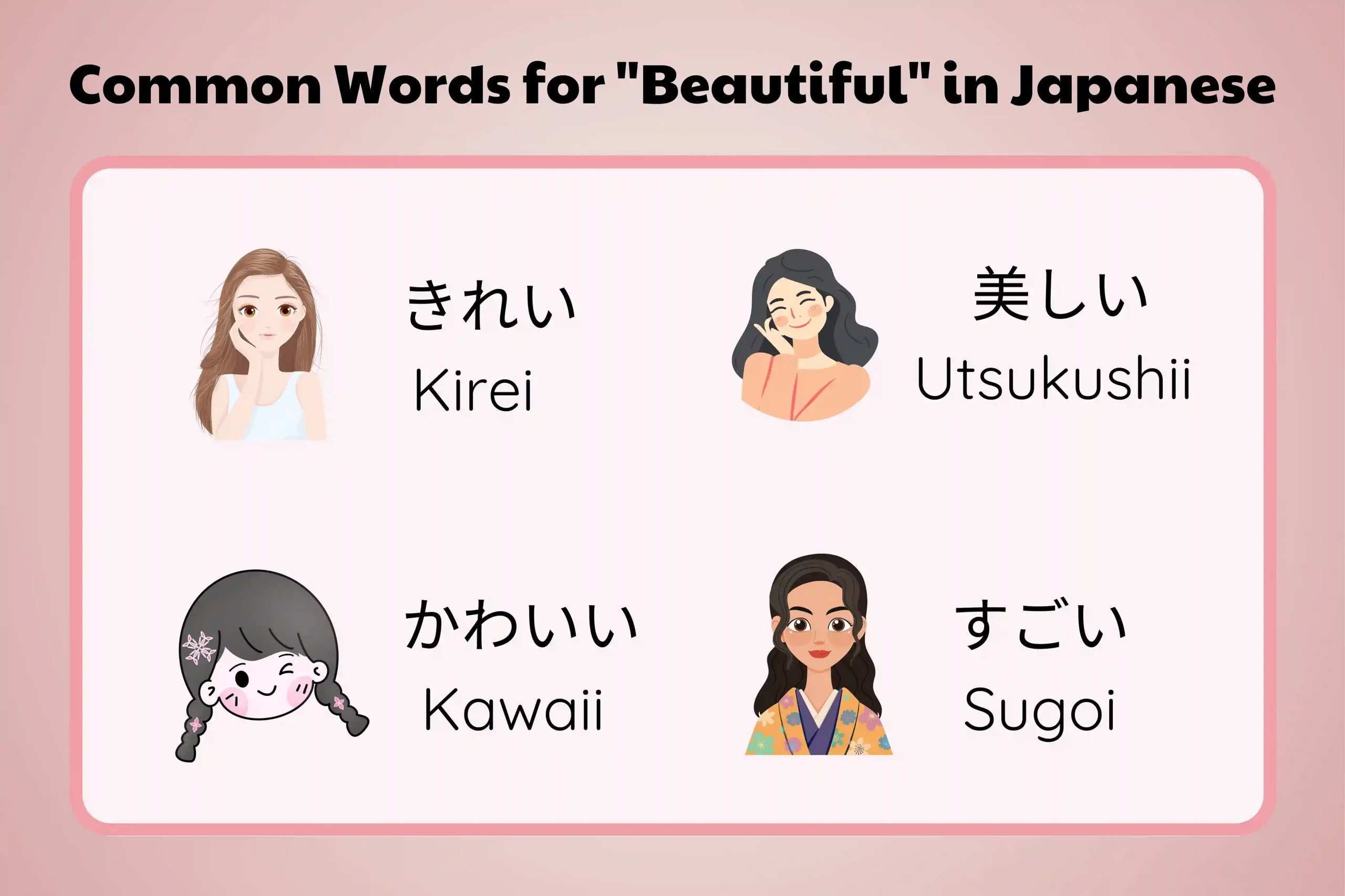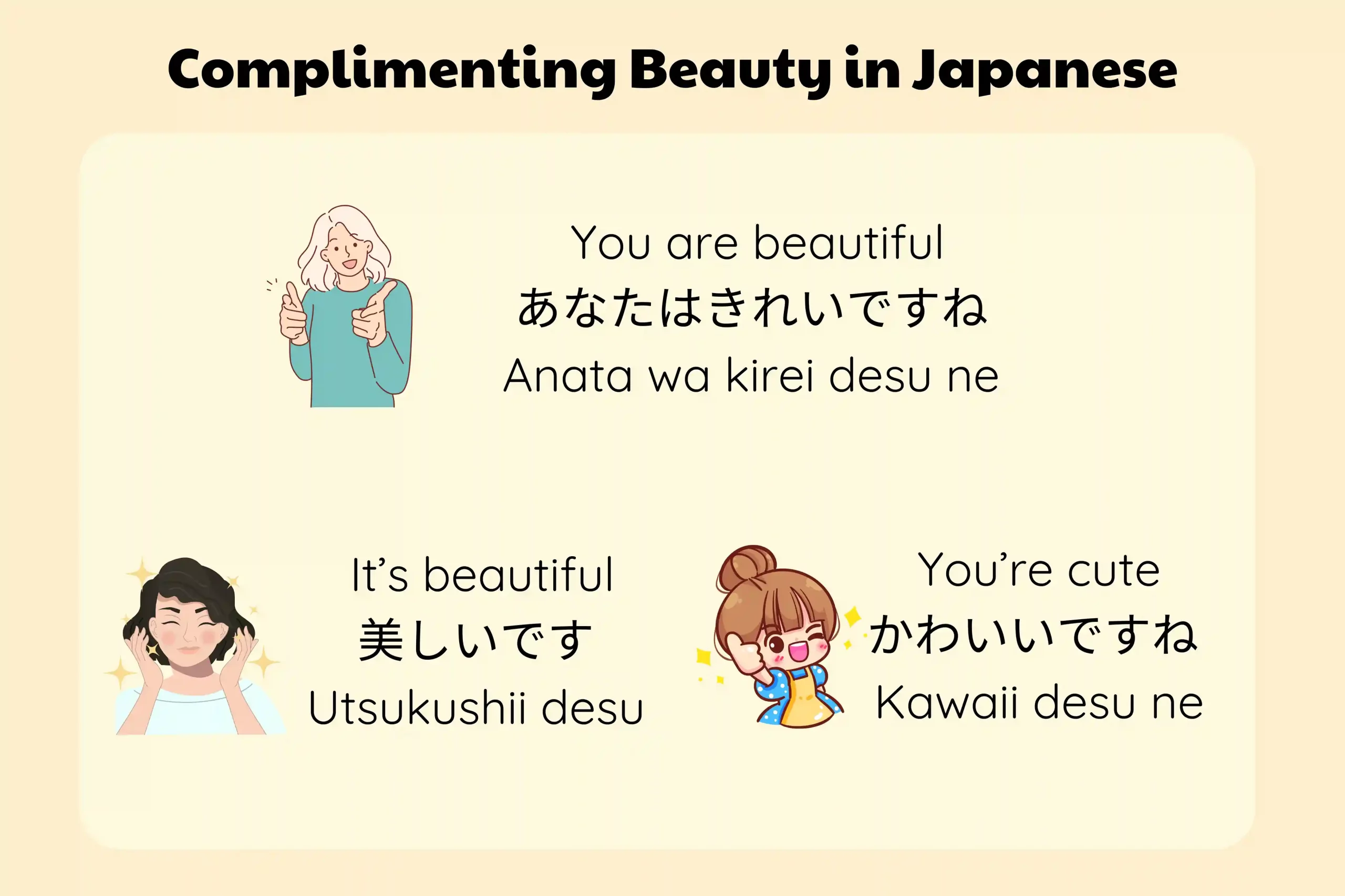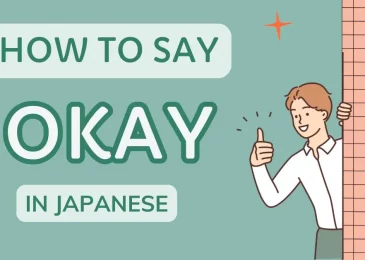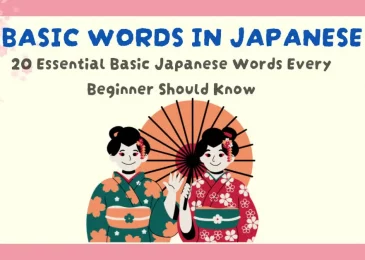The concept of beauty in Japan is unique and multifaceted, rooted in nature, tradition, and simplicity. From words that describe beauty to expressions that capture its essence, the Japanese language offers a variety of ways to convey what is “beautiful.” This guide will explore common Japanese words for “beautiful,” cultural expressions of beauty, tips for complimenting beauty in Japanese, and how beauty is portrayed in media and can enhance language learning.
Common Words for “Beautiful” in Japanese
The Japanese language offers a rich variety of words to convey beauty, each carrying its own nuances and context, reflecting the cultural values of Japan. Here are some of the most common words for “beautiful” and their meanings.

1. Kirei (きれい)
Meaning and Usage: “Kirei” is one of the most widely used words for “beautiful” in Japanese. It can also mean “clean” or “neat,” reflecting a Japanese cultural emphasis on purity and simplicity. Unlike some other words for beauty, “kirei” often implies an orderly, refined quality. It’s commonly used to describe people, nature, and objects that appear visually pleasing, calm, and harmonious.
Example: 「この花はとてもきれいですね」(“Kono hana wa totemo kirei desu ne”) – “This flower is very beautiful, isn’t it?”
2. Utsukushii (美しい)
Meaning and Usage: “Utsukushii” is a more poetic and formal word for “beautiful,” often evoking elegance, grace, and aesthetic depth. It is typically used for descriptions of natural scenery, artistic expressions, or moments that stir emotional responses. This term is reserved for beauty that feels profound or awe-inspiring and is less commonly used in everyday conversation compared to “kirei.”
Example: 「山の景色が美しい」(“Yama no keshiki ga utsukushii”) – “The mountain scenery is beautiful.”
3. Kawaii (かわいい)
Meaning and Usage: Though “kawaii” is usually translated as “cute,” it’s an integral part of Japanese beauty standards. The concept of “kawaii” encompasses more than just appearance; it includes behavior, mannerisms, and even personality traits associated with innocence, youthfulness, and charm. The kawaii aesthetic is pervasive in Japanese culture, from fashion and pop culture to everyday life, and it’s not limited to people; animals, objects, and even handwriting can be described as “kawaii.”
Example: 「彼女はとてもかわいいですね」(“Kanojo wa totemo kawaii desu ne”) – “She is very cute, isn’t she?”
4. Sugoi (すごい)
Meaning and Usage: Although “sugoi” doesn’t directly translate to “beautiful,” it’s often used as an expression of admiration or awe. This word can convey a sense of amazement or admiration for something outstanding or incredible, and as such, it is sometimes used to comment on things that are beautiful in an impressive or breathtaking way. “Sugoi” captures the excitement or overwhelming appreciation of something remarkable.
Example: 「その作品はすごい!」(“Sono sakuhin wa sugoi!”) – “That artwork is amazing!”
Beyond Words: Expressions of Beauty in Japanese Culture
Japanese culture embraces beauty in ways that go beyond mere appearance, often valuing elements like subtlety, imperfection, and impermanence. These concepts reveal a deep, philosophical approach to aesthetics in Japan, where beauty is seen as transient and natural, rather than static or flawless. Here are a few key cultural expressions that capture this unique approach.
1. Wabi-Sabi (侘寂)
Definition: Wabi-sabi is a central concept in Japanese aesthetics that celebrates the beauty found in imperfection and transience. Rather than viewing aging or wear as flaws, wabi-sabi embraces them as integral parts of an object’s history and character. This concept highlights a respect for the natural cycle of growth, decay, and renewal, often symbolizing an acceptance of life’s fleeting nature.
Cultural Example: The art of kintsugi is a perfect example of wabi-sabi in practice. In kintsugi, broken pottery is repaired with lacquer mixed with powdered gold, silver, or platinum. Rather than hiding the damage, the golden seams highlight it, turning the cracks into a unique feature that adds beauty and depth to the piece. This method reflects the belief that brokenness and repair can enhance an object’s beauty, creating an item that’s one-of-a-kind and rich with history.
2. Shibui (渋い)
Definition: Shibui refers to an understated, refined form of beauty that is simple yet sophisticated. It is often characterized by subtlety and a reserved elegance, lacking the boldness or extravagance of more flamboyant styles. Shibui embodies a quiet beauty that reveals itself gradually and often improves with time. This quality can be seen in traditional Japanese arts, architecture, and even everyday items.
Cultural Example: A minimalist tea set, a calligraphy brush stroke, or the muted, earthy colors of a traditional kimono are all examples of shibui. These items are designed not to dazzle but to draw the viewer into a deeper appreciation over time. The appreciation of shibui aligns with a sense of humility, where beauty is not something to be loudly displayed but quietly respected.
3. Iki (粋)
Definition: Iki is an aesthetic that captures refined elegance, sophistication, and a sense of natural spontaneity. It is often associated with personal style and behavior, exuding a quiet confidence that is neither pretentious nor excessively polished. Iki is not just about outward appearance but also about an individual’s attitude—simple, chic, and effortlessly graceful.
Cultural Example: Someone with a casual yet stylish fashion sense or a person who speaks with poise and self-assured ease may embody the concept of iki. This quality is especially appreciated in traditional arts like kabuki, where performers portray characters with a poised and unpretentious air. Iki can also be seen in the way people interact or present themselves, with a balance of simplicity and elegance that feels authentic and unaffected.
These expressions of beauty—wabi-sabi, shibui, and iki—highlight Japan’s unique aesthetic values. In Japanese culture, beauty is often found not in perfection or permanence but in the quiet elegance of simplicity, the graceful acceptance of imperfection, and the natural charm of authenticity. These ideas continue to influence various aspects of Japanese art, design, and lifestyle, offering a deeper understanding of beauty that goes beyond the surface.
Complimenting Beauty in Japanese
In Japanese culture, complimenting someone’s beauty involves a degree of subtlety and awareness of social norms. Unlike in some cultures where direct compliments may be more common, Japanese compliments are often understated and align with the cultural emphasis on humility and respect. Compliments are given thoughtfully, and choosing the right phrase and tone is essential to avoid coming across as too forward or insincere. Here are some common expressions used to compliment beauty in Japanese, each with its own context and nuance.

1. あなたはきれいですね (“Anata wa kirei desu ne”) – “You are beautiful.”
- This phrase is a straightforward way to tell someone they are beautiful. “Kirei” is a versatile term that not only means “beautiful” but can also imply a sense of cleanliness or neatness. Saying “Anata wa kirei desu ne” shows appreciation for someone’s appearance in a respectful and genuine way. However, it’s worth noting that Japanese speakers often avoid directly saying “anata” (“you”) in conversation, especially if the relationship is casual or close. Simply saying “kirei desu ne” can be enough, as the context usually makes it clear who you are referring to.
- Usage Tip: This phrase is commonly used in situations where you want to express admiration for someone’s beauty in a respectful manner. For example, it could be used when complimenting someone at a special event or gathering.
2. 美しいです (“Utsukushii desu”) – “It’s beautiful.”
- “Utsukushii” is a more poetic and formal word for “beautiful,” often reserved for describing beauty that is elegant, timeless, or deeply moving. This term is frequently used to talk about the beauty of nature, art, or something awe-inspiring. When used to describe a person, it can convey admiration for someone who has an air of elegance and sophistication. It’s also versatile enough to apply to natural scenery, traditional art forms, and other subjects where beauty is profound.
- Example in Context: If you’re admiring a breathtaking view of a mountain or a delicately crafted piece of art, you might say, “Utsukushii desu” to express that it’s beautiful. If used for a person, it conveys that their beauty is exceptional and graceful.
3. かわいいですね (“Kawaii desu ne”) – “You’re cute.”
- “Kawaii” is perhaps one of the most popular words in Japanese culture, representing an entire aesthetic that celebrates all things cute and charming. While often associated with “cuteness,” kawaii can be used to compliment not only appearance but also behaviors, mannerisms, or items that evoke a sense of endearment. It’s frequently used to compliment young people, children, pets, and even objects that have an adorable or pleasing quality.
- Usage Tip: Because “kawaii” can be used in a variety of contexts, it’s important to consider the relationship and situation. For example, complimenting a friend’s outfit or hairstyle with “kawaii desu ne” is common, and it’s even polite to say this to colleagues or acquaintances when the context is lighthearted. For younger people, pets, or charming objects, “kawaii” is universally understood as a warm compliment.
Cultural Notes on Complimenting in Japanese
In Japanese culture, compliments are often downplayed, and it’s common for the recipient to respond with humility. Phrases like “ie ie” (no, no) or “sonna koto wa nai” (it’s not like that) are polite ways of deflecting praise, as humility is highly valued. This custom contrasts with more direct cultures where compliments may be readily accepted. When complimenting beauty in Japanese, it’s important to keep this cultural perspective in mind, as well as to match the formality of your compliment to the situation and relationship.
How Beauty is Portrayed in Japanese Media and Arts
Beauty is a pervasive theme in Japanese media, from anime and manga to traditional arts and fashion. Each medium reflects the cultural nuances of Japanese aesthetics, often drawing on historical influences and evolving trends.
1. Anime and Manga
- Many anime and manga portray characters with idealized beauty traits such as big eyes and slender physiques. However, beauty is also shown through character traits, like kindness or bravery, which reflects the Japanese appreciation for inner beauty.
- Example: In the famous Studio Ghibli films, beauty is found not only in the characters but also in the natural landscapes and meticulous attention to detail.
2. Traditional Arts
- Traditional Japanese arts like Ikebana (flower arranging), Sado (tea ceremony), and Kintsugi reflect Japan’s aesthetic values. Each art form seeks beauty through harmony, balance, and the acknowledgment of imperfection.
- Example: In Ikebana, the natural beauty of flowers is accentuated by arranging them to show balance and flow, often highlighting asymmetry, which is valued in Japanese design.
3. Fashion and Beauty Standards
Japanese fashion often reflects both traditional beauty values and modern influences, blending kawaii culture with Western styles. Japanese beauty standards place emphasis on clear skin, natural beauty, and subtlety, with less focus on heavy makeup or extreme enhancements.
Beauty in Japanese Language Learning
Learning words and expressions for “beautiful” in Japanese provides more than just vocabulary; it opens doors to understanding Japanese culture. By studying these terms, language learners can gain insights into values like humility, harmony, and appreciation of the natural world, which are core aspects of Japanese society.
1. Using Beauty Words in Language Practice
- Practice using words like kirei and utsukushii in conversation exercises, describing nature, or complimenting someone in your language exchanges.
- Apps like MochiKana and MochiJapanese can help you learn Japanese vocabulary efficiently, including phrases related to beauty, through spaced repetition and interactive flashcards.
2. Enhancing Cultural Understanding
Incorporate cultural phrases like wabi-sabi and shibui into your vocabulary to express complex ideas of beauty. These phrases are useful in understanding Japanese art, design, and everyday life, giving you a deeper connection to Japanese culture.
Tips for Learning Japanese Vocabulary Quickly and Effectively
Mastering vocabulary is a crucial step in achieving fluency in Japanese. With so many new words to learn, a few smart strategies can help you retain vocabulary efficiently. Here are some tips to make your learning journey faster and more enjoyable.
1. Focus on Core Vocabulary First
Start by learning the most frequently used words in daily conversations and common settings. This core vocabulary will serve as your foundation and allow you to understand more contexts as you progress.
2. Use Spaced Repetition for Long-Term Retention
Spaced repetition is an effective way to reinforce memory by reviewing words at gradually increasing intervals. This helps solidify your retention of words over time. MochiKanji, for instance, uses a spaced repetition system to keep your vocabulary fresh and reduce forgetting, making it easier to build a strong memory bank for essential words.

3. Practice Vocabulary in Context
Learning words in context rather than in isolation helps you understand their meanings and nuances. Try reading simple Japanese sentences, watching beginner-level Japanese videos, or engaging with materials where you can see words in real situations. This approach improves recall and helps you remember the words more effectively.
Conclusion
The Japanese language provides a rich tapestry of words and expressions to capture the concept of beauty. From kirei and utsukushii to the philosophical depth of wabi-sabi, beauty in Japanese is complex and meaningful, deeply woven into the culture. Whether you’re learning Japanese for personal enrichment or exploring Japanese aesthetics, understanding these expressions can enhance your appreciation of the Japanese language and its cultural values. Beauty in Japanese isn’t just about looks; it’s an art form, a mindset, and a way of seeing the world that celebrates simplicity, imperfection, and harmony.





